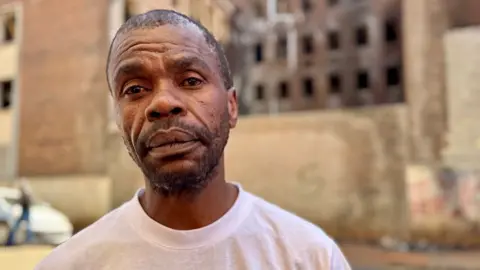Blackened by soot, the gutted and derelict remains of South Africa's infamous Usindiso building in central Johannesburg stand as an unintentional memorial to the 76 people who died here in a devastating fire two years ago.
At one time an office block, the 1950s building in the Marshalltown area was abandoned and then overtaken by several hundred people needing shelter. One of those was Vusi Tshabalala, who recalls how he narrowly escaped the blaze on that August night.
Awoken by the flames, Tshabalala, alongside his girlfriend and brother, covered themselves in wet blankets and ran out in the dark. As we were running, others got injured; when they fell, people couldn’t help them. I thank God we came out without injuries, he shared.
This tragedy highlighted deep housing inequalities in Africa's wealthiest city, a problem authorities promised to address. However, two years later, many survivors like Tshabalala remain in temporary housing with continuous threats of violence.
Tshabalala was first relocated to Rosettenville but left due to lack of job opportunities. He then sought refuge in Denver, where frequent shootings forced him to flee again. Now, he lives in a makeshift settlement near the burnt-out building, reliant on construction work.
Thobeka Biyela, another survivor, speaks of the dangers in their current living situation. After being shot during a violent altercation nearby, she fears for her safety and struggles to care for her child.
Despite promises from President Cyril Ramaphosa to improve housing conditions, survivors feel abandoned and unsafe, leading to uncertainty about their future. Activists call for immediate government action to provide permanent housing solutions before more lives are lost.




















